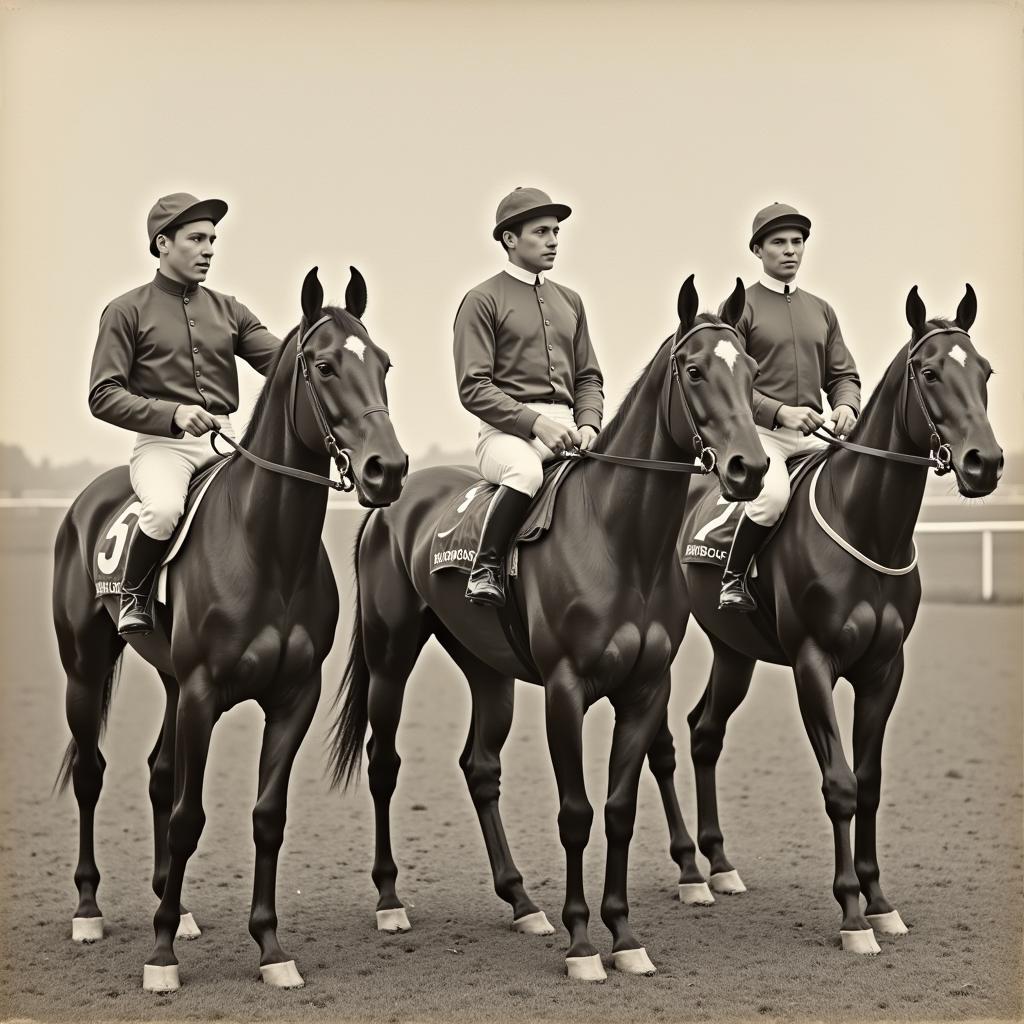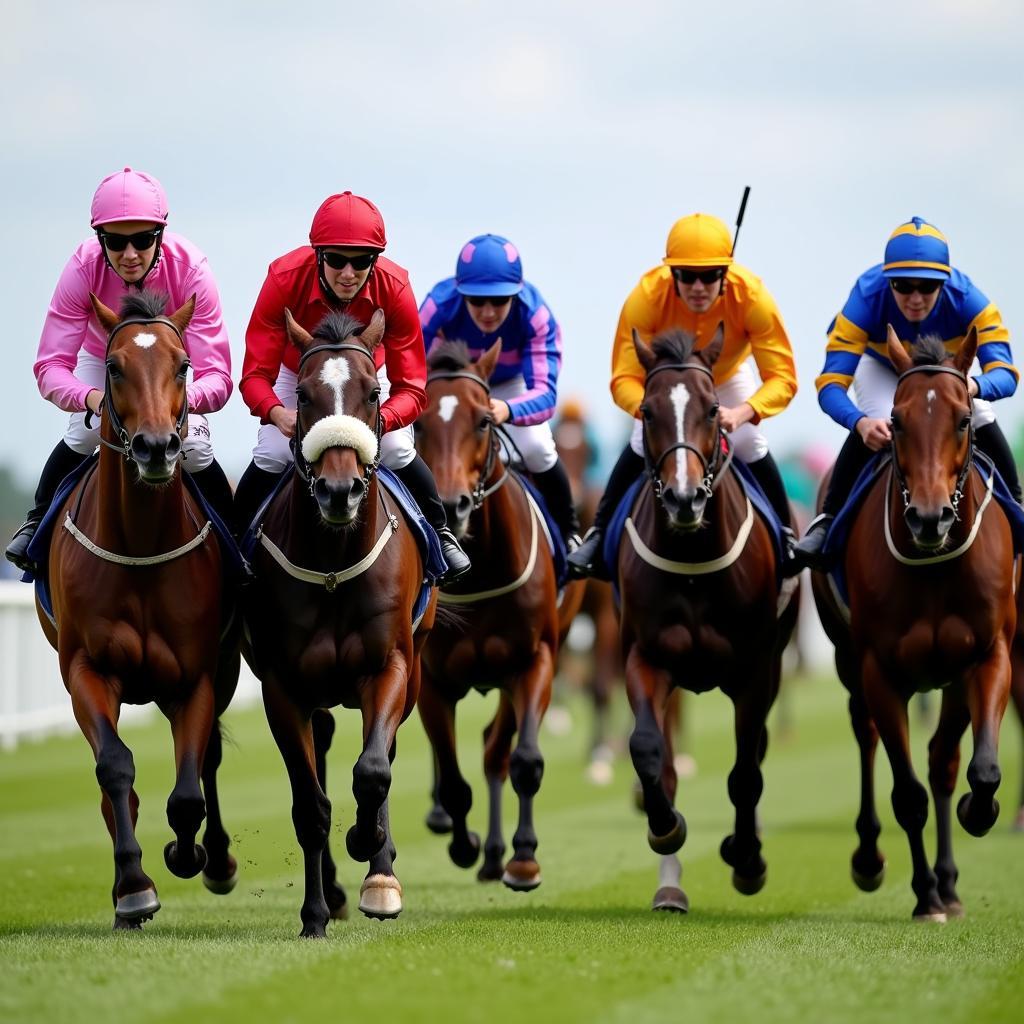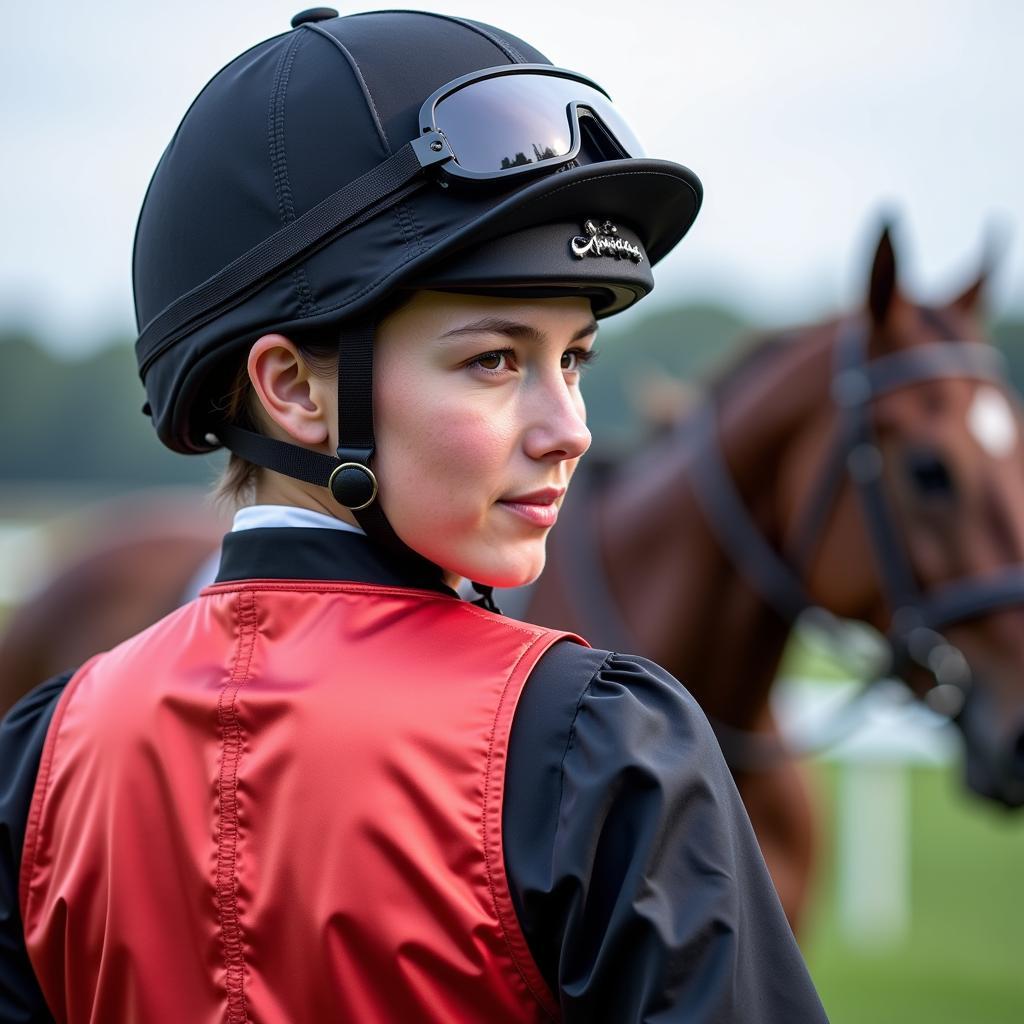Jockey uniforms in horse racing are more than just clothing; they represent tradition, regulations, and the unique identity of each horse and rider. From the iconic silks to the essential safety gear, every element of a jockey’s attire plays a crucial role in the sport. This article delves deep into the world of jockey uniforms, exploring their history, significance, and the various components that make them so distinctive.
The History and Evolution of Jockey Uniforms
The history of jockey uniforms is intertwined with the evolution of horse racing itself. Early jockeys wore everyday clothing, but as the sport formalized, so did their attire.  Early Jockey Uniforms in Horse Racing By the 18th century, distinctive colors and patterns began to emerge, representing the horse owners. This marked the beginning of the “silks” we know today. These brightly colored jackets, often adorned with unique designs, allowed spectators to easily identify and follow their chosen horses. Over time, these silks became highly regulated, with specific designs registered to prevent duplication.
Early Jockey Uniforms in Horse Racing By the 18th century, distinctive colors and patterns began to emerge, representing the horse owners. This marked the beginning of the “silks” we know today. These brightly colored jackets, often adorned with unique designs, allowed spectators to easily identify and follow their chosen horses. Over time, these silks became highly regulated, with specific designs registered to prevent duplication.
The Significance of Silks in Horse Racing
Silks are the most recognizable element of Jockey Uniforms Horse Racing. These lightweight jackets, traditionally made of silk (though now often synthetic materials), are more than just aesthetically pleasing; they serve a practical purpose. Their vibrant colors and distinct patterns allow for easy identification of riders during a race, particularly crucial in the heat of the competition.  Colorful Silk Jockey Uniforms in Action Furthermore, silks embody the history and traditions of horse racing, connecting modern riders to the sport’s rich past.
Colorful Silk Jockey Uniforms in Action Furthermore, silks embody the history and traditions of horse racing, connecting modern riders to the sport’s rich past.
Essential Safety Gear: Protecting the Jockey
While silks contribute to the visual spectacle of horse racing, safety gear ensures the rider’s well-being. The horse racing jockey helmet is perhaps the most critical piece of safety equipment. Designed to protect the jockey’s head from impact during falls, these helmets are rigorously tested to meet stringent safety standards. In addition to helmets, protective vests are worn under the silks to minimize impact injuries to the torso. These vests are made of lightweight, shock-absorbing materials that offer crucial protection during a race.
The Role of Boots and Breeches in Jockey Performance
A jockey’s footwear and legwear are also integral to their performance and safety. Riding boots, typically made of leather, provide ankle support and protect the rider’s feet. Breeches, the tight-fitting trousers worn by jockeys, allow for freedom of movement and reduce friction against the saddle. The correct fit of both boots and breeches is essential to ensuring comfort and preventing chafing during a race.
Modern Jockey Uniforms: A Blend of Tradition and Technology
Today’s jockey uniforms horse racing reflect a blend of tradition and modern technology. While the silks retain their historical significance, the safety gear has undergone continuous improvement, incorporating advanced materials and designs for optimal protection. For example, modern helmets are lighter and offer better ventilation than their predecessors, enhancing rider comfort without compromising safety. Similarly, protective vests now utilize cutting-edge materials to maximize shock absorption and minimize the risk of serious injury.
 Modern Jockey Uniform Technology
Modern Jockey Uniform Technology
“The evolution of jockey uniforms reflects the ongoing commitment to rider safety,” says renowned equestrian expert, Dr. Emily Carter. “While tradition remains a cornerstone of the sport, the incorporation of modern technology ensures that jockeys have the best possible protection on the track.”
Conclusion: Jockey Uniforms – A Symbol of Horse Racing
Jockey uniforms are more than just clothing; they are a symbol of horse racing itself. They represent tradition, safety, and the unique identity of each horse and rider. From the colorful silks to the vital protective gear, each element plays a crucial role in the sport’s rich tapestry. Understanding the history and significance of these uniforms enhances our appreciation for the sport and the athletes who dedicate their lives to it.
FAQs about Jockey Uniforms
- Why are silks so important in horse racing? Silks allow spectators and officials to easily identify riders during a race.
- What is the purpose of a jockey’s helmet? The helmet protects the jockey’s head in case of a fall.
- What are breeches made of? Breeches are traditionally made of a sturdy, flexible material like cotton or a synthetic blend.
- Are horse jockey uniforms standardized? There are regulations regarding safety equipment, but silks are unique to each owner.
- What is the significance of the colors on the silks? The colors represent the horse’s owner and are registered to prevent duplication.
- Where can I learn more about horse jockey hats? Visit our dedicated page on jockey hats.
- Do jockey jacket horse racing designs have any meaning? The designs are chosen by the owner and can be simple or intricate.
For any assistance, please contact us: Phone: 0772127271, Email: [email protected] or visit our location: QGM2+WX2, Vị Trung, Vị Thuỷ, Hậu Giang, Vietnam. We have a 24/7 customer service team.